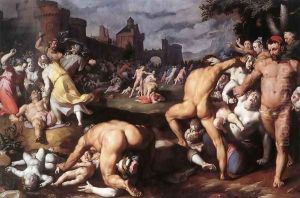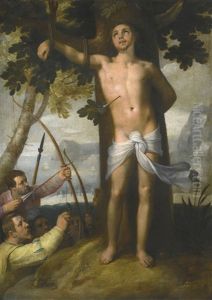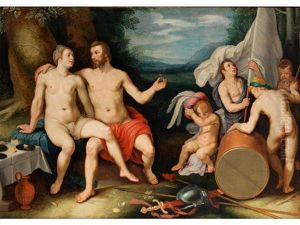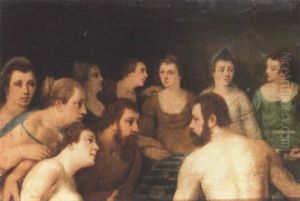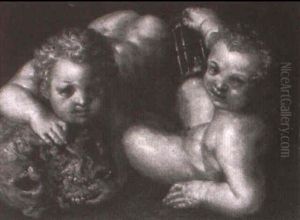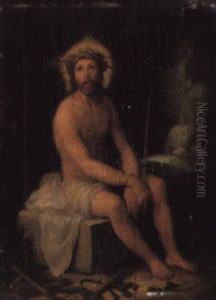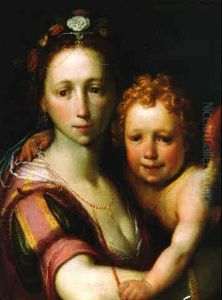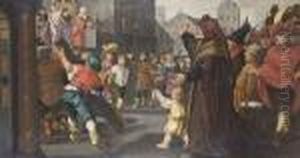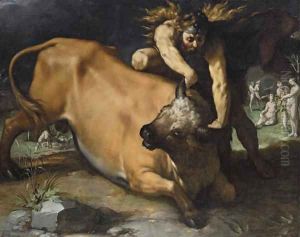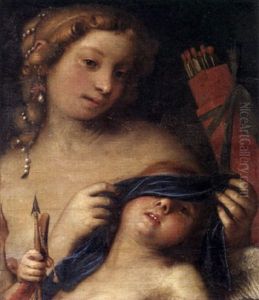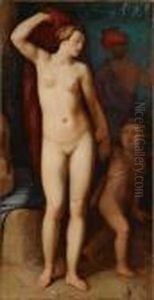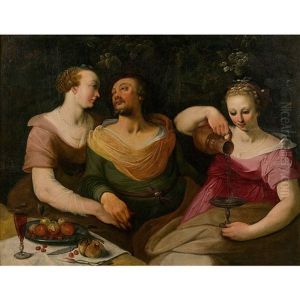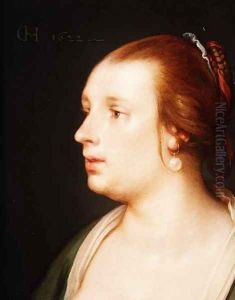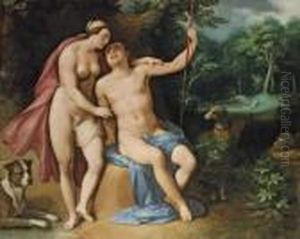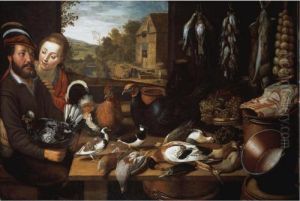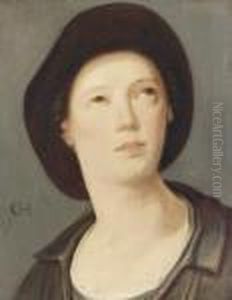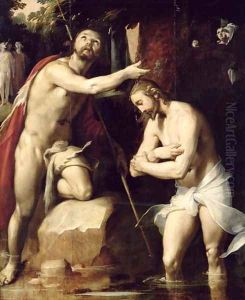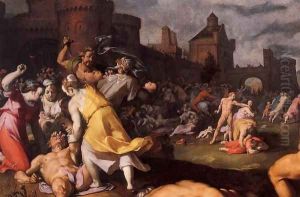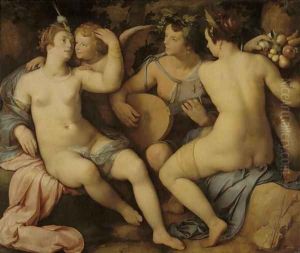Cornelis Cornelisz Van Haarlem Paintings
Cornelis Cornelisz van Haarlem, often simply referred to as Cornelis van Haarlem, was a significant Dutch painter from the late 16th and early 17th centuries, one of the key figures in the Northern Mannerist movement. Born in Haarlem in the Netherlands in 1562, he was a contemporary of the Dutch Golden Age, although his style differed from the realism that characterized much of the art from this period.
Cornelis van Haarlem was known for his grand, often mythological and biblical scenes, characterized by their dramatic force and sometimes erotic overtones. His figures are typically elongated and contorted, showing the influence of Italian Mannerism, a style which he helped to introduce and popularize in the Dutch Republic. He was also a member of the Haarlem Guild of St. Luke and played a significant role in the development of the city's artistic life.
Educated in the arts from an early age, Cornelis van Haarlem started his studies under Pieter Pietersz and later traveled to France and perhaps Italy, which had a lasting impact on his style. He was one of the founders of the Haarlem Academy, where he, along with Karel van Mander and Hendrick Goltzius, taught and influenced a number of younger artists, including Frans Hals.
Throughout his career, Cornelis van Haarlem painted a variety of subjects, from portraits and genre scenes to large-scale historical and mythological paintings. His work was well-received, and he garnered commissions from both private patrons and public institutions. Notable works include 'The Fall of the Titans' (1588-1590), 'The Wedding of Peleus and Thetis' (1592-1593), and 'The Massacre of the Innocents' (1590).
Cornelis van Haarlem's contributions to Dutch art were not limited to his paintings. He also had an impact on the development of the Dutch art market and the organization of artists in Haarlem. He lived through a period of great change and transition in the Netherlands, and his work reflects the dynamic cultural shifts of his time.
He passed away in Haarlem in 1638, leaving behind a legacy that would influence Dutch painters for generations to come. His art is preserved in many major museums around the world, including the Frans Hals Museum in Haarlem and the Rijksmuseum in Amsterdam.
